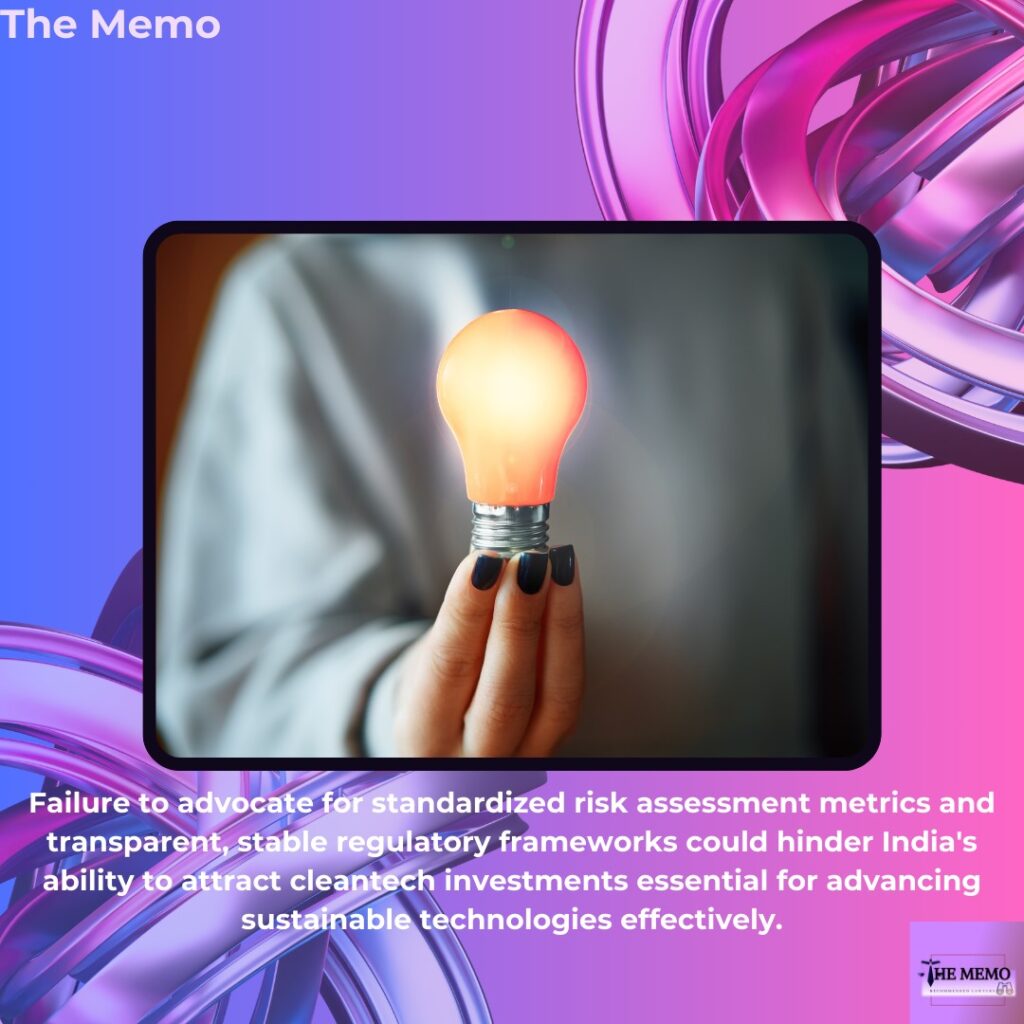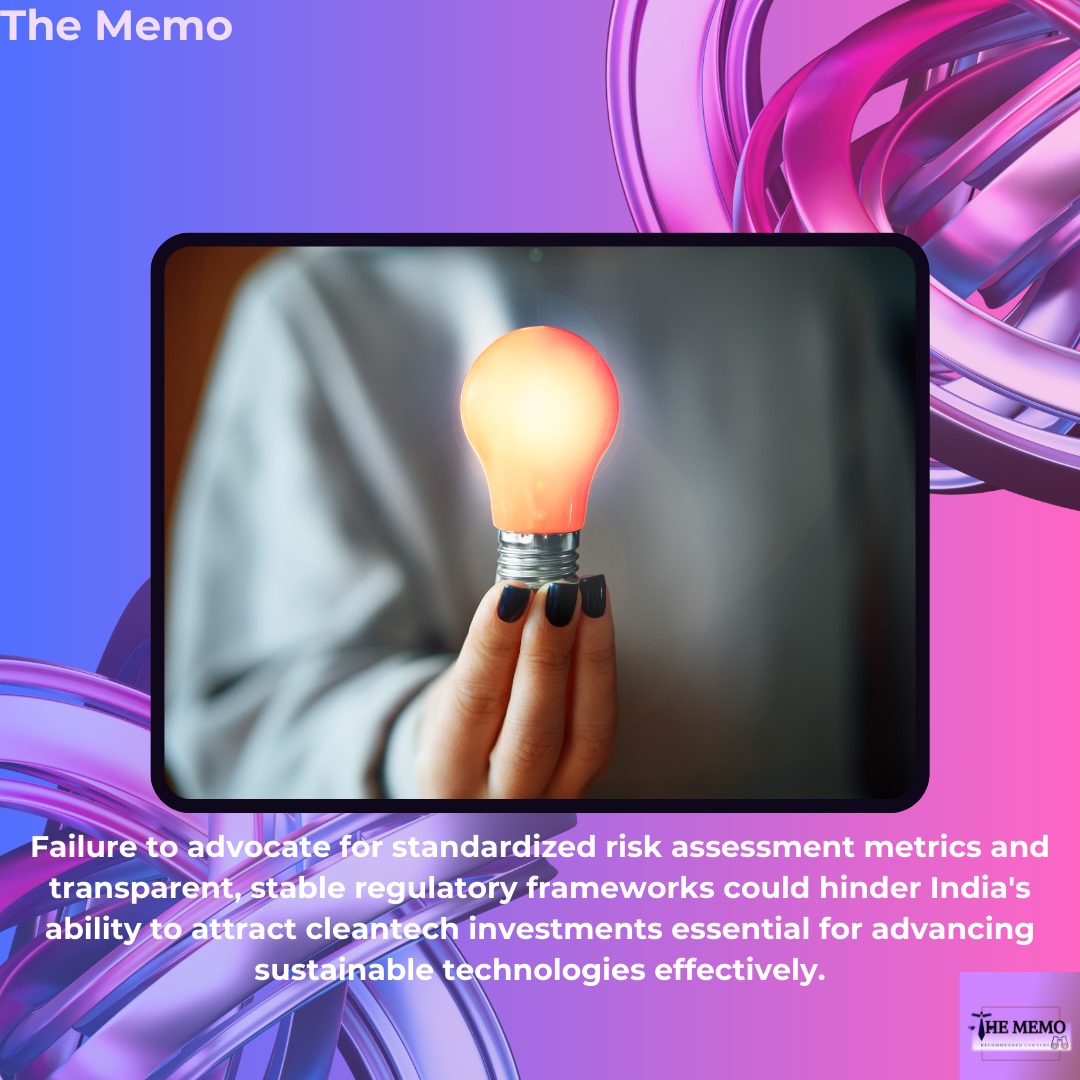
The battle against climate change requires rapid innovation in the cleantech sector, ranging from renewable energy sources to energy-efficient technologies. Cleantech solutions hold immense potential for a sustainable future. However, transforming innovative ideas into commercially viable products presents a significant challenge: financing. Cleantech ventures often face unique hurdles in the financial landscape, as evidenced by the journey of the start-up, an Indian cleantech startup.
Founded in 2017, the start-up aimed to revolutionize the renewable energy landscape in India with its innovative solar power solutions. The startup’s journey provides a clear lens into the legal and financial challenges that cleantech companies often encounter, and the strategies that can help overcome them.
Initial Challenges: Risk Perception and Lack of Standardized Metrics
One of the primary hurdles the start-up faced was the perception of risk among traditional lenders. Cleantech technologies, including the start-up’s solar solutions, often have longer payback periods compared to conventional investments. The inherent uncertainties surrounding future regulations and market adoption further complicated their financing efforts.
Traditional financing channels like bank loans were hesitant due to these perceived risks. The absence of standardized metrics for assessing cleantech investment risks made it difficult for lenders to evaluate the start-up’s potential accurately.
Solution: Developing Standardized Risk Assessment Frameworks
The start-up recognized the need for standardized metrics to mitigate perceived risks. They actively participated in industry collaborations aimed at creating these metrics. These efforts included evaluating factors like environmental impact, potential cost savings, and market adoption forecasts.
Additionally, the start-up sought assessments from independent institutions specializing in cleantech risks. These institutions provided more objective evaluations, which helped instill confidence in potential investors.
Example: the start-up collaborated with the National Institute of Solar Energy (NISE) in India to validate their technology’s efficiency and environmental benefits, providing a credible assessment that lenders could rely on.
Government-backed Loan Guarantees and Insurance Programs
Government intervention can play a crucial role in reducing the perceived risk of cleantech investments. The start-up explored government-backed loan guarantees and specialized insurance programs to mitigate financial risks.
Solution: Leveraging Government Support
The start-up applied for loan guarantees from government agencies, which partially mitigated the risk for lenders. These guarantees assured lenders that a portion of their investment was secure, even if the venture faced difficulties.
Example: the start-up secured a loan guarantee from the Indian Renewable Energy Development Agency (IREDA), which helped them obtain the necessary financing from traditional banks.
The start-up also explored insurance programs tailored to cleantech risks, such as coverage for regulatory changes or technological setbacks. These programs provided additional security for investors, encouraging them to support the start-up’s initiatives.
Public-Private Partnerships (PPPs) for Cleantech Innovation
Public-private partnerships proved to be a highly effective strategy for addressing the start-up’s financing challenges. By sharing risks and resources between the public and private sectors, these partnerships facilitated the necessary investments for the start-up’s growth.
Solution: Implementing Co-investment Models and Joint R&D Funding
In co-investment models, government agencies co-invested with private lenders in the start-up’s promising solar projects. By sharing the initial risk, the government demonstrated confidence in the technology’s potential, attracting additional private investment.
Example: The Indian Ministry of New and Renewable Energy (MNRE) co-invested with private venture capital firms in the start-up’s pilot projects, significantly reducing the financial burden on the startup.
Joint research and development (R&D) funding also played a crucial role. Public-private partnerships helped co-fund the start-up’s research initiatives, accelerating innovation and reducing financial pressure.
Example: the start-up partnered with the Indian Institute of Technology (IIT) to co-develop advanced solar panels, leveraging public and private funds for cutting-edge research.
Streamlining Regulatory Processes and Permitting Procedures
Navigating complex regulatory processes and permitting procedures was another significant hurdle for the start-up. These processes often delayed project implementation and increased costs.
Solution: Advocating for Regulatory Clarity and Streamlining Permitting Processes
The start-up actively engaged with policymakers to advocate for streamlined regulatory processes. They highlighted the need for standardized procedures to reduce administrative burdens on startups.
Example: the start-up worked with the Confederation of Indian Industry (CII) to propose a streamlined permitting process for solar projects, which was later adopted by several state governments.
Providing clear and stable regulations for the cleantech sector was equally important. Long-term regulatory clarity ensured that the start-up and its investors could make informed decisions based on a predictable policy landscape.
Utilizing Green Bonds and Carbon Pricing Mechanisms
Innovative financial instruments like green bonds and carbon pricing mechanisms provided additional avenues for financing the start-up’s projects.
Solution: Issuing Green Bonds and Advocating for Carbon Pricing
The start-up issued green bonds to finance their solar projects, offering a secure and transparent investment vehicle for sustainable projects. These bonds attracted private investment by linking investments to positive environmental outcomes.
Example: the start-up raised $20 million through green bonds issued in collaboration with the Climate Bonds Initiative, enabling the expansion of their solar energy projects.
The start-up also supported the implementation of carbon pricing schemes, which created financial incentives for clean energy sources. Effective carbon pricing mechanisms, such as carbon taxes or cap-and-trade systems, made the start-up’s solar solutions more attractive to investors.
Example: the start-up participated in policy discussions with the Indian government to advocate for a national carbon pricing strategy, which would further incentivize investments in renewable energy.
Limited Availability of Tax Incentives
Government tax incentives significantly impact the financial viability of cleantech solutions. However, the availability and structure of these incentives varied across jurisdictions, creating challenges for the start-up.
Solution: Standardizing and Harmonizing Cleantech Tax Incentives
The start-up advocated for standardized cleantech tax incentives at both the national and state levels. Establishing minimum thresholds or standardized tax credit percentages for specific cleantech categories ensured a level playing field.
Example: the start-up collaborated with industry associations to lobby for standardized tax incentives for solar projects, resulting in more consistent and predictable financial benefits.
For internationally operating ventures, the start-up explored multilateral agreements between governments to harmonize cleantech tax incentives. This fostered consistency and removed uncertainties for investors.
Solution: Ensuring Transparency and Long-Term Stability
The start-up emphasized the need for clear, transparent guidelines outlining the eligibility criteria and application processes for cleantech tax incentives. Long-term policy commitments from governments provided stability and predictability, allowing ABC to make sound investment decisions.
Example: The Indian government’s introduction of a long-term solar tax incentive program, which the start-up helped advocate for, provided much-needed clarity and stability for the sector.
Solution: Implementing Performance-Based Incentives
The start-up supported evolving tax incentives to reward cleantech solutions based on their environmental impact. Linking tax credits to factors like carbon emission reduction ensured that incentives aligned with sustainability goals.
Example: the start-up successfully lobbied for tiered tax incentives in India, offering higher benefits for solar projects with greater environmental impact.
Conclusion: A Path to Sustainable Success
While the fight against climate change demands rapid advancements in clean technology, financing these innovations remains a significant hurdle. Traditional financial institutions often perceive cleantech ventures as risky due to extended payback periods and regulatory uncertainties. However, the start-up’s journey demonstrates that these challenges can be overcome.
By embracing a multi-pronged approach, including standardized risk assessment frameworks, government-backed guarantees, public-private partnerships, streamlined regulations, green bonds, and standardized tax incentives, cleantech startups like the start-up can unlock their true potential.
The key lies in collaboration. By bridging the gap between the public and private sectors, fostering a culture of innovation, and addressing the legal challenges that impede cleantech financing, we can create a robust financial ecosystem. This will empower cleantech ventures to flourish, pave the way for groundbreaking clean technologies, and ultimately contribute to a sustainable future for our planet.
The start-up’s success story serves as an inspiring example for other cleantech startups, demonstrating that with the right strategies and support, it is possible to navigate the complex legal and financial landscape and make a meaningful impact in the fight against climate change.





